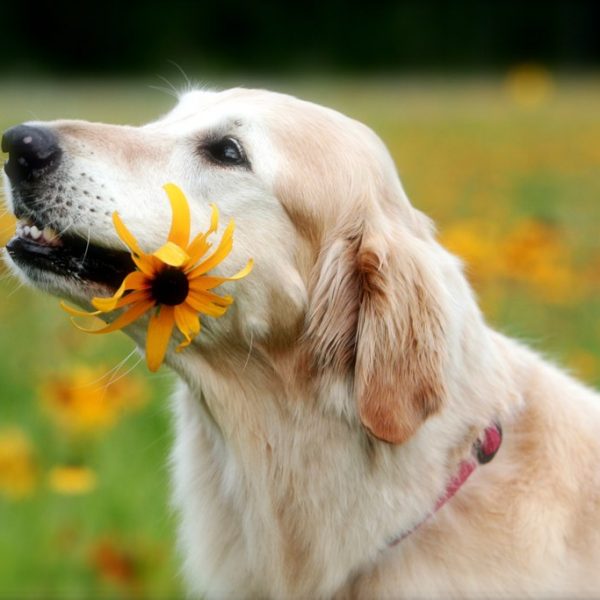How to Teach a Senior Dog New Tricks
 Think you can’t teach an old dog new tricks?
Think you can’t teach an old dog new tricks?
Wrong!
There are tons of tricks that are great to teach older dogs. What’s more, teaching your senior dog new tricks can help him stay sharp, healthy, and excited about life. Plus, it will keep your bond strong.
Training older dogs and teaching them new tricks is often easier than training puppies, as older dogs tend to be more obedient, have more control, and are, well, more mature.
Read on for tips on teaching older dogs new tricks, courtesy of Mother Nature Network and Dogtime.
Keep Your Dog’s Limitations in Mind
Even if your senior dog is healthy overall, he might have just a touch of arthritis or some other problem common to older pooches. You may want to take your dog for a check-up and ask your vet for advice on how to best keep him safe if you are trying new activities with him. Does your dog have any hearing issues? Visual impairment? Joint pain?
Limitations won’t prevent you from being able to teach your dog new tricks or behaviors, but they may require that you find alternate ways to teach him. If you’re not sure how to adapt to your dog’s abilities, you may want to consult a professional trainer for ideas.
A good general rule with older dogs is that you should just be gentle with them!
For example, if your dog has dental issues, avoid putting him in a situation where he may aggravate the problem, such as having him carry a stick or other potentially irritating object.
Standard Commands
Regular commands like sit, down, and come are easy to teach older dogs. A technique that usually works is to get the dog to perform the trick using a small treat. If your dog doesn’t really care about treats, gently put him in the proper position and then praise him highly. Repeat this until it sticks. A few “lessons” per day for three to four weeks should do it. Training is essentially helping a dog form a habit, and it takes about that long for a habit to form.
Yawning on Command
Teaching your dog to yawn on command is pretty simple and makes for an adorable parlor trick.
When your dog yawns naturally, give him a small treat or praise him. Clicker training can also be helpful in this effort. You can also use words to reinforce the behavior, in combination with the reward.
You can really apply this treatment to any desired behavior: just meet the behavior with a cue and a reward; eventually, your dog will learn to repeat it.
Ring a Bell to Go Outside
This one sounds rather sophisticated, but it’s totally doable! “Jingle bells” on a strip of leather would work well for this behavior.
Start by rewarding your dog to ring the bell. Then, position the bell by the door so that your pup learns to associate it with going outside. Incorporate the bell whenever your doggie has to go out and continue this for weeks. Soon, your pup will be able to let you know exactly when he needs to go out! (If you teach your dog this trick, just make sure not to get a bell that’s too loud and obnoxious.)
One of the common dog myths is that old dogs can’t learn new tricks. They can! And, these are some useful things to teach a senior dog. Plus, there are plenty of other tricks to teach your dog that you can try with your senior pup. Keeping them active, physically and mentally, can help your senior pup age well and may even give them the energy to act like a puppy again every now and then.
